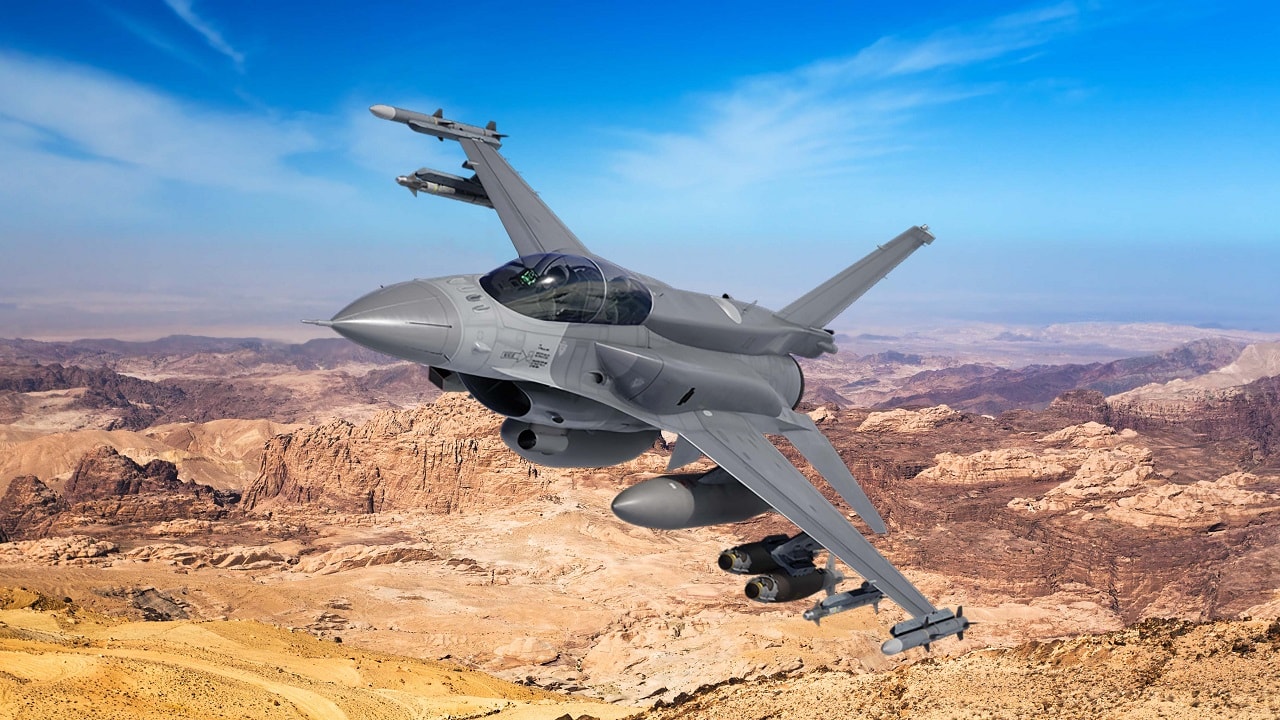Since entering service in 1979, the F-16 Fighting Falcon has become one of the world’s top jet fighters, operated by more than 25 nations around the world, with some 3,000 now in service. It is one of the most battle-tested jet fighters as well, engaging in more than 400,000 combat sorties with a combined 19.5 million flight hours.
It has also been adopted to complete a number of missions, which include air-to-air fighting, ground attack, and electronic warfare.
Fast and agile, F-16 Fighting Falcon isn’t just one of the top fighters in service today; it is also amongst the most cost-effective. While it lacks the range and payload of the larger twin-engine F-15 Eagle, it actually costs less than half – which is why the fourth-generation F-16 has been in use since the 1970s and will likely keep flying for many more years to come.
F-16 Block 70 Ready
The Fighting Falcon has been steadily updated and improved, and this month, Lockheed Martin announced that it had completed the first successful flight of the Block 70 models at its Greenville, South Carolina facilities. The flight with the twin-seat F-16D occurred on Tuesday morning with Lockheed Martin test pilots Dwayne “Pro” Opella and Monessa “Siren” Balzhiser at the helm. Total flight time was approximately 50 minutes and included airworthiness checks, such as engine, flight control, and fuel system checks, as well as basic aircraft handling, the aerospace giant reported.
“Today’s successful flight is a testament of the hard work, dedication and commitment to our customers and their missions,” said OJ Sanchez, vice president, Integrated Fighter Group, which includes the F-16 program. “This milestone demonstrates Lockheed Martin’s commitment to advancing this program and getting this much-needed aircraft and its advanced 21st Century Security capabilities to the warfighter.”
Middle East Bound
The F-16 Block 70 jet includes the first of 16 jets set to be delivered to Bahrain, while six countries in total have selected Block 70/72 aircraft. In addition to the current official backlog of 128 jets to-date to be built in Greenville, Jordan last year signed a Letter of Offer and Acceptance (LOA) for eight jets while last week, the Middle Eastern nation also signed an additional LOA for four more jets. Lockheed Martin has already received a contract to begin Jordan’s long-lead activities.
NATO member Bulgaria has further signed an LOA for an additional eight jets for its fleet. Once these are finalized, the backlog will increase to 148.
“Lockheed Martin is fully committed to delivering quality platforms for our customers’ critical missions, and I am so proud of our talented team in Greenville,” said Danya Trent, F-16 Vice President and Site Lead in Greenville. “This is the culmination of significant development, design, digital engineering, supply chain and production line advances to an already proven platform that will continue to deliver decades of service in support of customers’ national security.”
The Block 70/72
The F-16 Block 70 is equipped with the Northrop Grumman AN/APG-83 active electronically scanned array radar (derived from the F-16E/F Block 60 AN/APG-80 and also known as the Scalable Agile Beam Radar), a new Raytheon mission computer, the Link 16 datalink, modern cockpit displays, an enhanced electronic warfare system, and a ground collision avoidance system.
It is also powered by a General Electric F100-GE-129D engine, while the Block 72 designation denotes a Pratt & Whitney F100-PW-229 engine enhancement package (EEP) powerplant.
According to Janes, the earlier block aircraft that were remanufactured to the Block 70/72 standard had been designated F-16V – and the maiden flight of an F-16V took place in 2017, with Taiwan being the first customer.
The international Block 70/72 and F-16V standard is reported to be analogous to the latest M7 configuration flown by the United States Air Force.
New production F-16s, which were developed to leverage structural and capability upgrades, are expected to be operated to 2060 and beyond.
MORE: Why Putin Fears the M1 Abrams Tank
MORE: I Went to War in the Leopard 2 Tank Ukraine Wants
MORE: World War III – Where Could It Start?
MORE: A U.S.-China War Over Taiwan Would Be Bloody
Author Experience and Expertise: A Senior Editor for 19FortyFive, Peter Suciu is a Michigan-based writer. He has contributed to more than four dozen magazines, newspapers, and websites with over 3,200 published pieces over a twenty-year career in journalism. He regularly writes about military hardware, firearms history, cybersecurity, politics, and international affairs. Peter is also a Contributing Writer for Forbes and Clearance Jobs. You can follow him on Twitter: @PeterSuciu.

